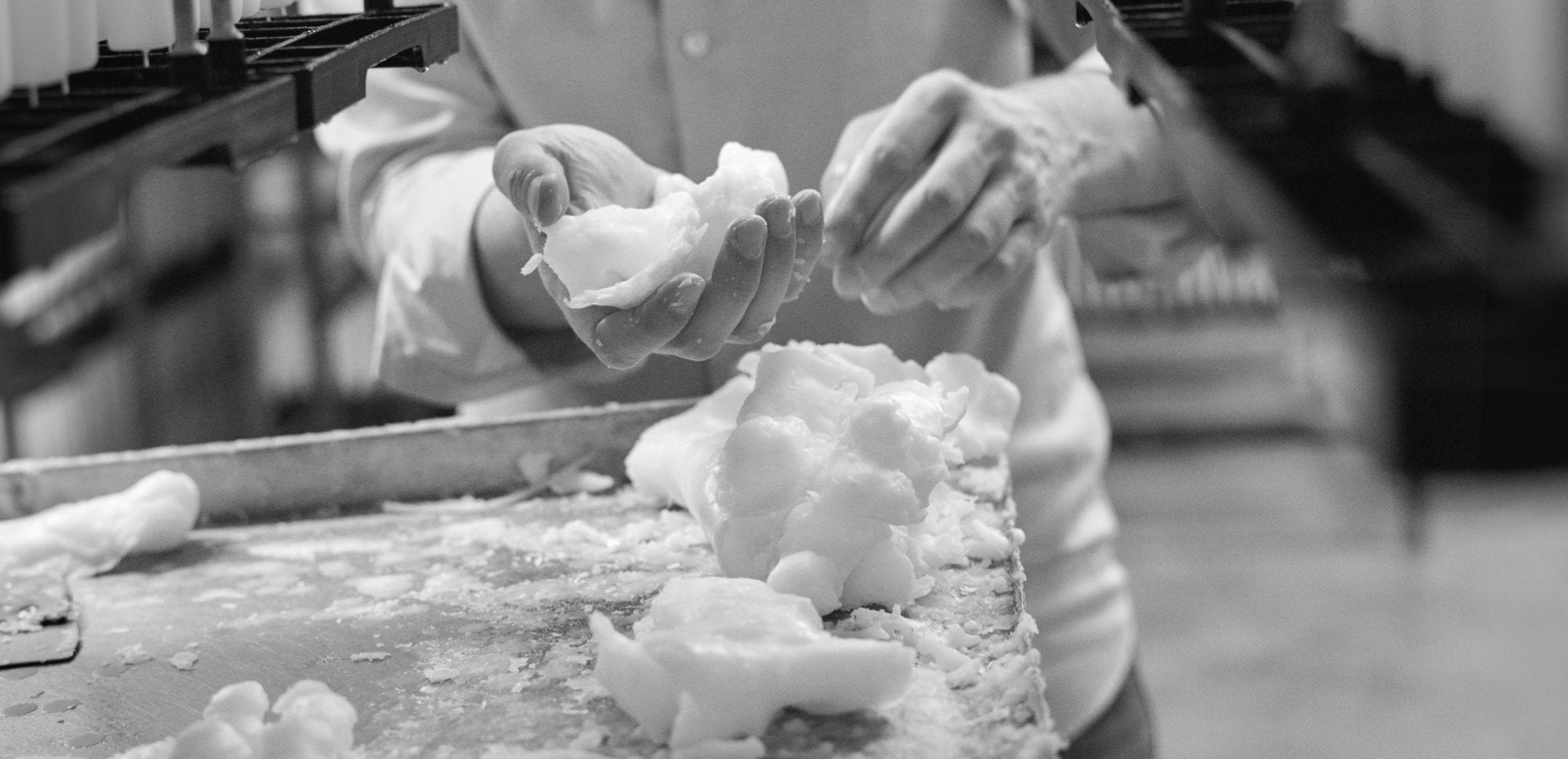High-quality wax candles
The quality of a candle is determined by the quality of the raw materials, and for more than 35 years we have – uncompromisingly – used the same good raw materials to create natural candles without any artificial additives. All our candles are made using paraffin wax with the highest possible melting point, which means that our candles burn more slowly; in fact, 30% longer than other candles.
The purest wax available
Our candles are made of 100% paraffin wax, a pure mineral product derived from crude oil. Contrary to what many believe, crude oil has nothing to do with petrol. Crude oil only becomes petrol once it is refined, but before that stage the paraffin wax is isolated and used for producing candles, for example.
The quality of the candles depends on the purity of the paraffin wax which is used. Our candles are made from the most highly refined paraffin wax – in other words, you will not find a cleaner product from a more natural raw material.
In terms of sustainability, paraffin wax has the smallest carbon footprint and the least environmental impact of all waxes.
100% cotton wicks
All our wicks are made from 100% pure cotton, which is completely lead-free.
Frames made from recycled plastic
All our taper candles can be supplied on a design-patented frame which, together with the heart in our logo, has been the company’s signature ever since the outset. The top and bottom of the frame are made of recycled plastic with uprights made of iron, one of the most environmentally friendly raw materials available.
Dyes and lacquers
Our lacquers and gold and silver coatings are water-based, and all the dyes we use are supplied by leading European suppliers.
The dyes are colour-fast, which means they are very clear and durable and do not fade when exposed to sunlight.
FSC-certified packaging
The candles are packed in FSC-certified boxes, so you can buy the candles with a clear conscience and in the certain knowledge that no more wood is felled in FSC-certified forestry than the forest is able to reproduce. At the same time, you are helping to protect nature and the social conditions in the forests where the wood is sourced. The FSC-label guarantees that the fauna and flora in the forest are protected, that the forestry workers have received appropriate training and receive proper pay, and that they are provided with suitable safety equipment.
Order-based production
At ester & erik, we only produce to order, which helps to prevent waste.
Indoor climate-friendly burning and extinguishing
Danes are among the Europeans with the highest consumption of candles a year. Unfortunately, many people believe that burning real candles is just as harmful to your health as diesel particles emitted from large machinery, not least because of stories in the media saying that burning candles is harmful to human health.
Candles do indeed give off ultrafine particles, but the quality of the raw materials and the way in which the candles are produced makes a big difference to how many particles are released when the candle burns.
A new study* from the Ministry of Environment and Food of Denmark shows that candles made from stearin (which is derived from palm oil) cause more pollution with ultrafine particles than paraffin wax candles. One of the reasons is that the candles have a thicker wick which makes the flame larger, so more wick and wax are burned in an hour compared to a paraffin wax candle.
However, for all candle types, far fewer particles are produced if the candles are burned correctly. If the candles are protected from draughts, then “the content of black carbon is relatively low, indicating a low emission of soot by the candles, and (…) the particulate matter emitted by the candles almost completely consists of water-soluble salts, which unlike particles emitted by diesel engines, dissolve easily when they are inhaled and get in contact with the humid surfaces of the respiratory tract.”
Therefore, it is crucial that you do not place candles in draughts, near air-conditioning vents or on radiators, as otherwise the flame becomes unstable, and more particles are released. In addition, it is important to use a candle extinguisher to avoid smoke, and to ensure that the candle is completely snuffed out.
* Danish Environmental Protection Agency/Environmentally friendly candles with reduced particle emissions (Environmental project no. 2053, November 2018)






